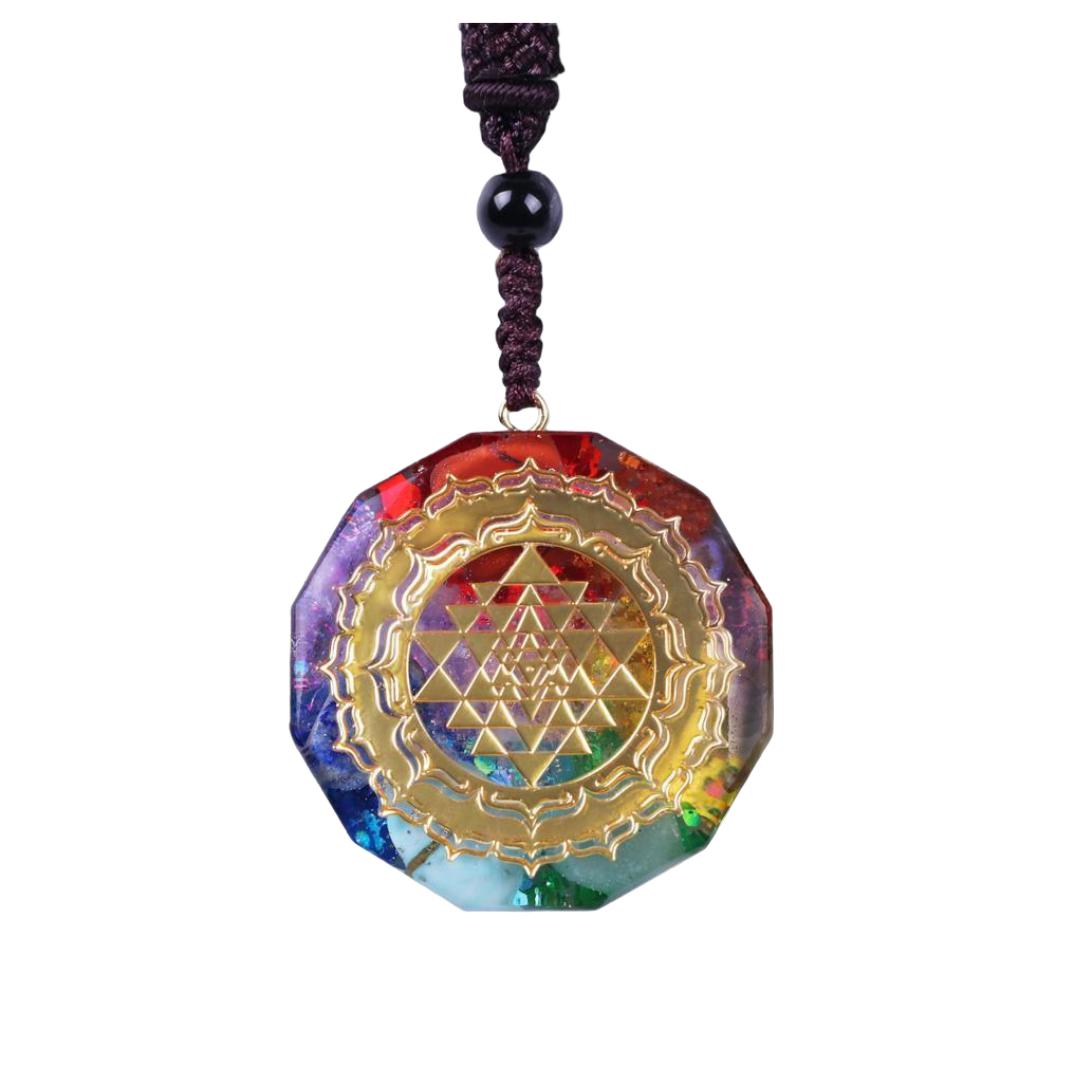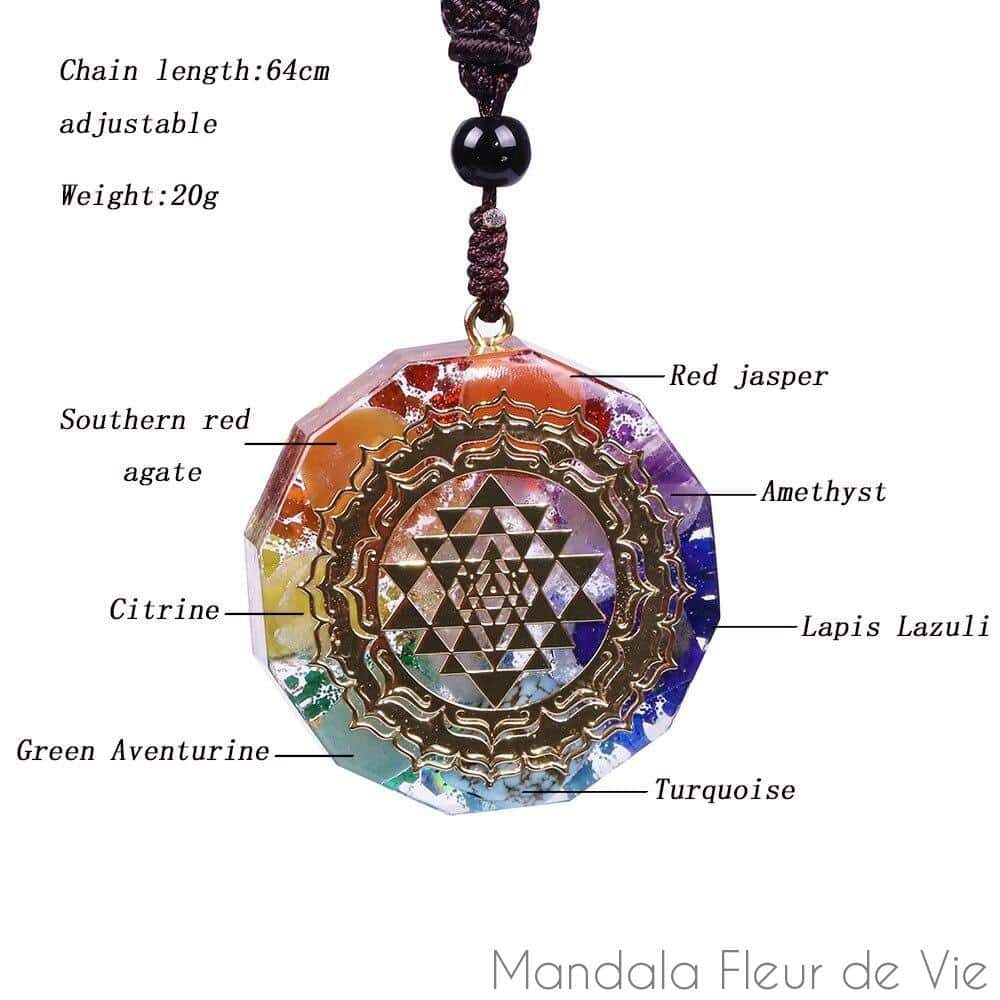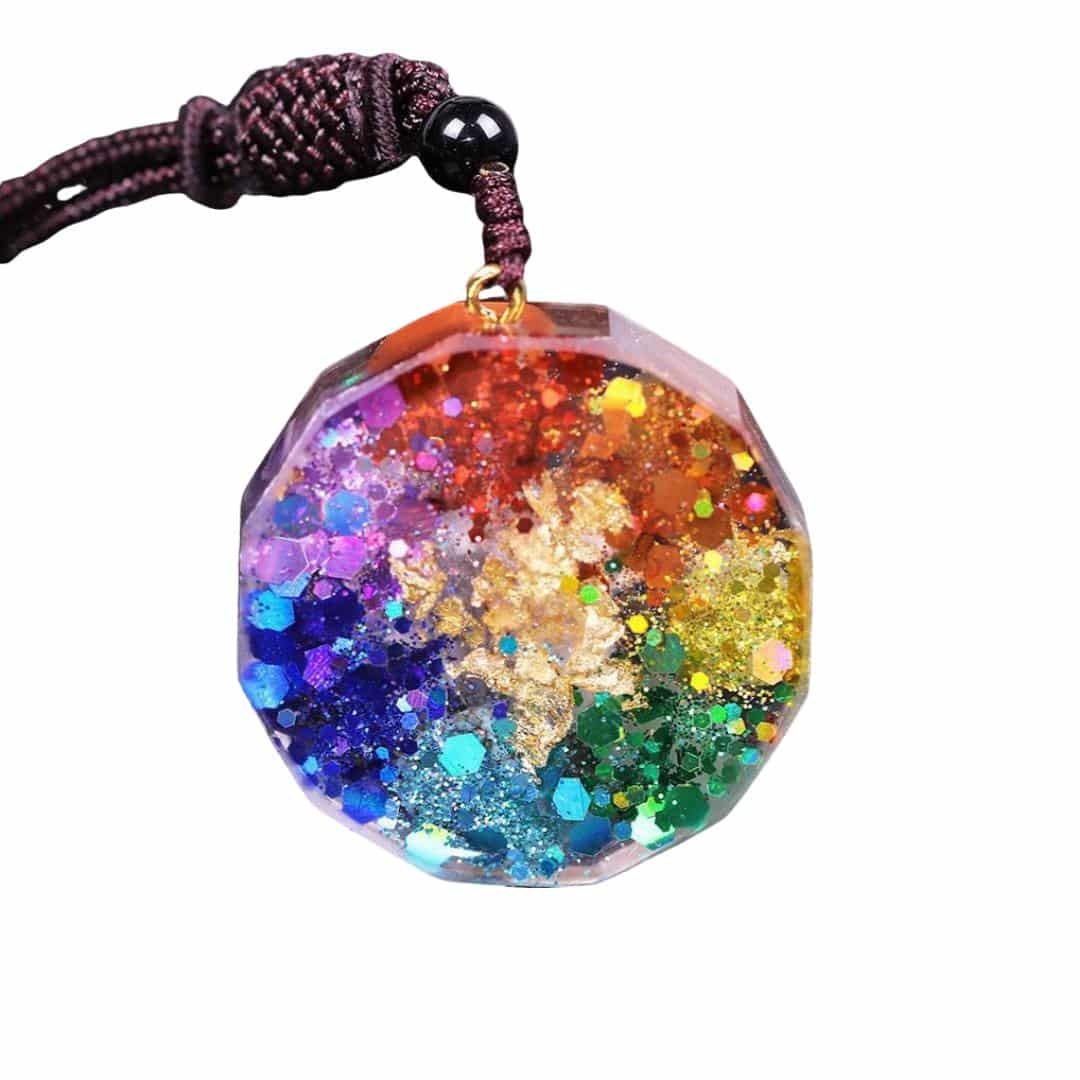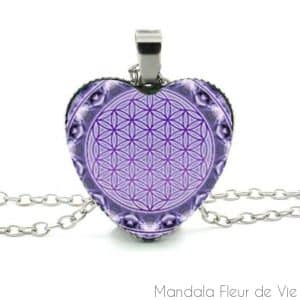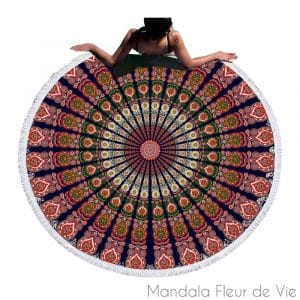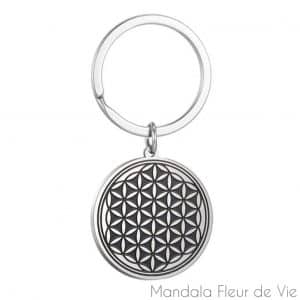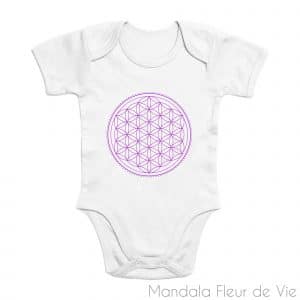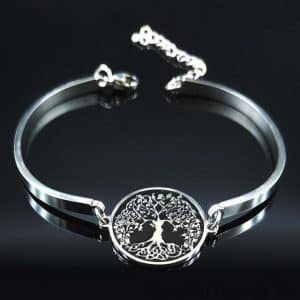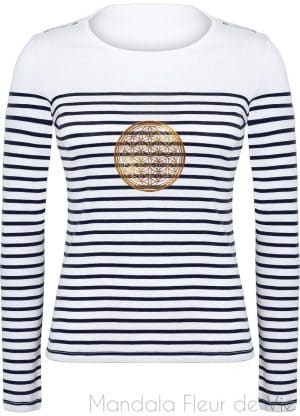Orgonite Sri Yantra Pendant
Features:
- Materials: natural stones and copper
- Pendant diameter: 3.5 cm
- Pendant thickness: 1.1 cm
- Composition: Red Jasper, Amethyst, Lapis Lazuli, Turquoise, Green Aventurine, Citrine, Red South Agate, White Crystal, Resin
What is orgone energy?
Orgonite was inspired by the research of Dr. Wilhelm Reich, an Austrian psychologist who conducted studies on bioenergy in the 20th century. He realized that energy (which he called orgone energy) behaved differently when interacting with organic, carbon-based metals compared to inorganic metals. Orgonite works by capturing energy through its matrix, which is made of resin and metals, both organic and inorganic materials. Inside each orgonite is a quartz crystal, which restores the energy to a natural, balanced, and healthy state.
Flower of Life, Sacred Geometry, and Metatron’s Cube
If you want to learn more about the flower of life, you have come to the right place! Welcome to our Flower of Life universe! At Mandala Flower of Life, we offer much more than just products with flower of life patterns; we open the doors to sacred geometry so that you can be and become who you truly are! Naturally, if you buy a flower of life t-shirt or a sticker, or if you hang up a tapestry with a flower of life pattern in your living room, you will:
- Change the decoration of the room
- Create a more zen atmosphere
- Increase the vibrational frequency of the room and the people who are present there for a long time
And that is already very satisfying! Not only does it change your mindset, subtly transforming your mind to become more peaceful and calm, but we also provide you with the opportunity to truly understand what the flower of life is and how it can transform your life.
Everything you need to know about the Flower of Life
For about forty years, the Flower of Life has intrigued and sparked discussions. In 1999, Drunvalo Melchizedek published a two-volume work entitled “The Ancient Secret of the Flower of Life,” which is the most comprehensive book on the subject to date. So, what exactly is the Flower of Life? Let’s find out!
Definition and origins of the Flower of Life:
The Flower of Life is an ancient symbol of sacred geometry. It has been found on numerous ancient monuments in different parts of the world. The oldest known representation of the “overlapping circles” pattern dates back to the 7th or 6th century BC and was found on the threshold of the palace of the Assyrian king Ashurbanipal in Dur-Sharrukin (now in the Louvre Museum). Another pattern has also been found drawn on the granite columns of the Temple of Osiris in Abydos, Egypt. This pattern consists of five motifs of 19 overlapping circles. It is made up of 19 regularly spaced circles that symmetrically overlap with each other.
How to draw the Flower of Life?
The indispensable tool for drawing the Flower of Life is obviously a compass. Choose a specific radius and keep it constant throughout the drawing process, as all the circles must have the same diameter. Start by drawing the first circle, then place the compass point on a point of the first circle and draw the second circle. The center of the second circle must pass through the center of the first circle. Continue this process to draw as many circles as desired, as the pattern can be reproduced infinitely.
Flower of Life and sacred geometry:
The Flower of Life is a symbol of sacred geometry. It is said to contain many other symbols of sacred geometry, such as the Platonic solids, Metatron’s Cube, the Vesica Piscis, and the Fibonacci sequence. Other figures, such as the Seed of Life, the Tree of Life, and the Germ of Life, stem from the Flower of Life. Some even believe that it is connected to Leonardo da Vinci’s famous drawing called the Vitruvian Man, which represents the human body based on divine proportions. The Flower of Life is also closely related to the golden ratio and divine proportion, which are believed to have been used in the construction of the Egyptian pyramids and cathedrals. For some, the Flower of Life is present everywhere, in every cell, atom, and molecular structure, and may even be the origin of life.
What is sacred geometry?
Sacred geometry refers to specific shapes that have special proportions or are intimately related to the golden ratio (or Phi ratio). These shapes can be found in ancient monuments, nature, and even the human body. Let’s explore the main figures of sacred geometry in detail:
Platonic Solids:
Also known as Platonic solids, these are five polyhedra with specific properties. Each solid has faces of equal area, edges of equal length, and angles formed by all edges that are the same. If any Platonic solid is placed in a sphere that circumscribes it at any point, all of its vertices will touch the inner surface of the sphere. The Platonic solids are the cube, tetrahedron, octahedron, icosahedron, and dodecahedron.
Metatron’s Cube:
It is one of the most powerful symbols of sacred geometry. It is said to be the hidden structure within the Fruit of Life, according to Drunvalo Melchizedek.
Merkaba:
It is the light body of the human being. According to Drunvalo Melchizedek, the word “Mer-Ka-Vah” in Hebrew means the throne of God and chariot or chariot; in Egyptian, “Mer-Ka-Ba” can be broken down into “Mer” meaning light field, “Ka” meaning spirit, and “Ba” representing the human body. Basically, it is the light body of the human being.
Vesica Piscis:
It is one of the most prominent figures in the Flower of Life and one of the most important ratios. The Vesica Piscis is the geometric shape formed by the intersection of two circles of the same diameter, where each circle’s center lies on the circumference of the other circle. Also known as the almond shape, it is considered one of the keys to Pythagorean esotericism.
Seed of Life:
The Seed of Life is at the heart of the Flower of Life. It consists of seven circles, representing the seven days of creation. With six circles surrounding a central circle, a total of seven, it can be seen as composed of seven seeds of life.
What are the benefits of the Flower of Life?
The Flower of Life is a form wave that harmonizes everything that is in discord. It regenerates infinitely, so there is nothing to do to recharge it. This symbol is believed to represent creation, the entire universe. The Flower of Life is said to be the origin of everything in creation, without exception: all biological life forms, crystal structures, DNA molecules. It indicates that all life originates from a single source, meaning that all life forms are intimately connected to the Flower of Life, and this also means that all life forms are interconnected.
How to use the Flower of Life?
The Flower of Life is primarily a powerful meditation tool, but it has many other applications in daily life. It can be used to energize water by pouring it into a Flower of Life carafe and leaving it for a few hours before drinking. The Flower of Life can also be used to purify and recharge crystals and to create crystal grids. It is used to better preserve food, essential oils, and other substances that you want to harmonize and energize. It can also be used to harmonize a space, such as a living room, waiting room, or office. Wearing a Flower of Life jewelry piece, such as a pendant or a ring, or wearing a clothing item like a t-shirt, can help maintain a high level of energy throughout the day and provide protection against unwanted heavy energies. If you like tattoos, you can get a Flower of Life tattoo on your body. Alternatively, you can try a temporary Flower of Life tattoo.
Découvrez également notre Sri Yantra Orgonite Pendant dans la catégorie Uncategorized.

